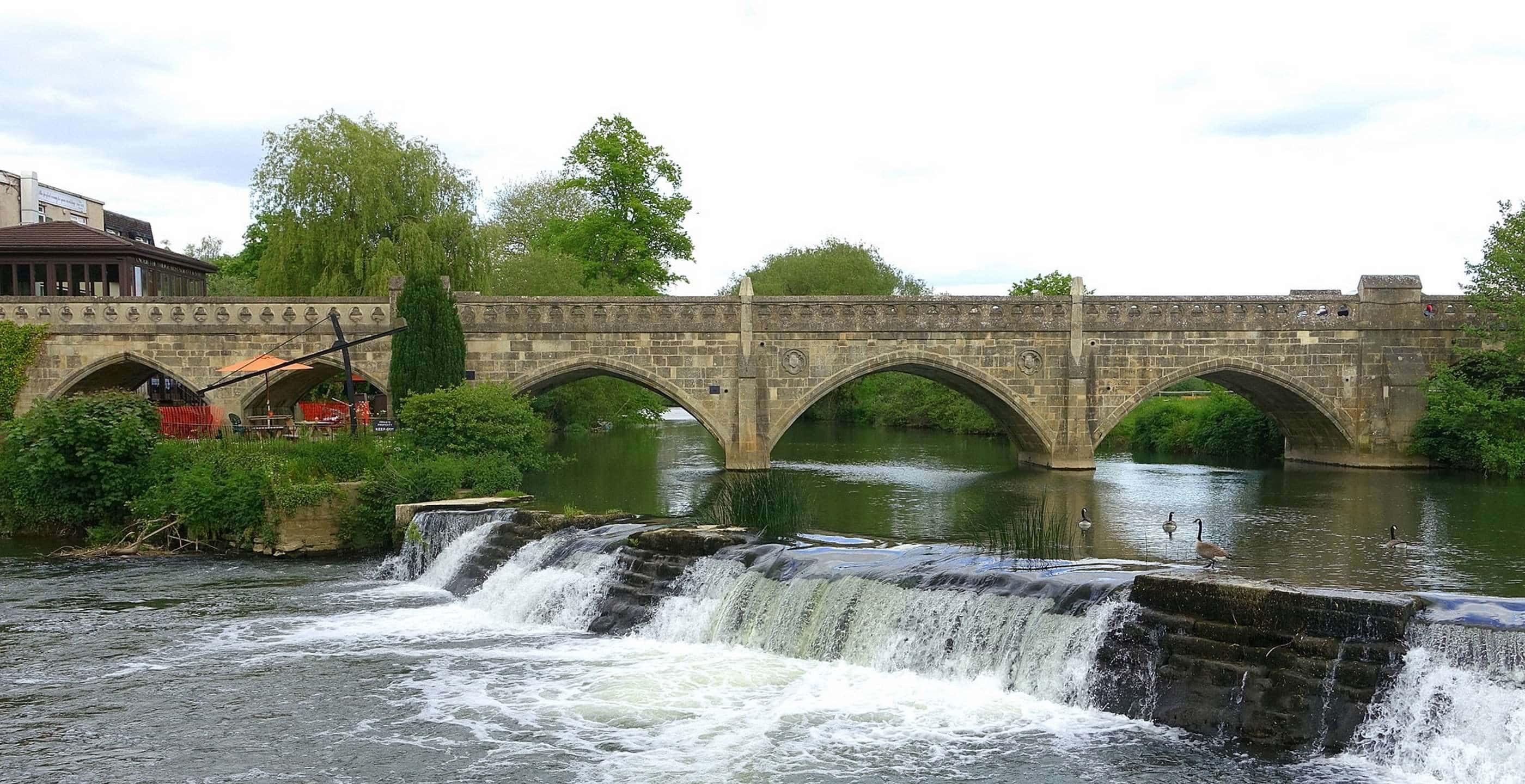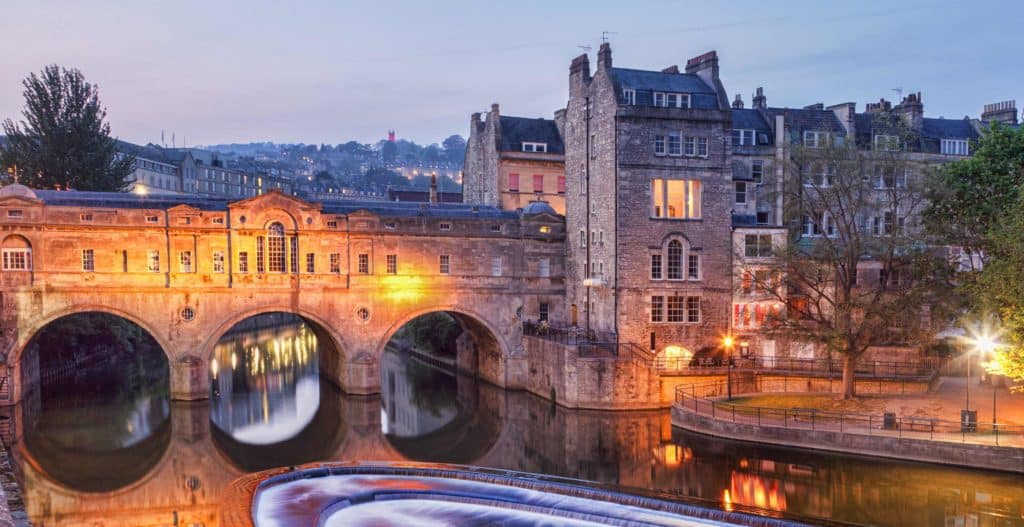Remember Plasticine? Many a 20th-century child spent hours modelling that wonderful stuff, even after the different colours coalesced into a stripey mess. The factory that produced this material was not situated in some grim industrial city, but instead, in a charming old village in the west country, graced by listed buildings and two attractive waterways: a river and a canal.
Bathampton, the home of Plasticine, is near Bath and shares with that venerable city an ancient history and signs of Roman visitation. The village, just to the east of the city, is a short stroll – or jog, or cycle ride – along the towpath of the Kennet and Avon Canal. You could also visit by car, bus, or boat.
The village has a long history, going back beyond Roman times. The Romans almost certainly quarried Bathampton Down, just to the south, for its limestone – now known as Bath Stone – which later became a major source of the area’s wealth. There is also evidence of Iron Age occupation. A 10th-century charter records Bathampton changing hands before the Norman conquest and it is mentioned again in the Domesday Book. From the 12th century, it was the site of a monastery, part of the Prior of Bath, until its dissolution by the order of Henry VIII.
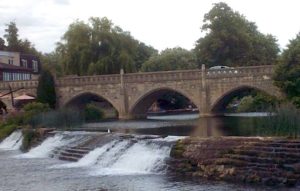 Bathampton Weir
Bathampton Weir
Bathampton Weir on the River Avon is about 600 years old, built originally to provide enough depth for the waterwheels for the early grain mills on both sides of the river. You can still see the hole where the original wheel was housed on the south side of the river. This is now situated in the garden of Bathampton Mill, a large, riverside pub. The weir is a favourite place for wild swimming!
At the edge of the pub garden stands a jetty, used by companies who run river cruises from the weir at Pulteney Bridge in Bath. The river is also used by canoeists, kayakers and paddle-boarders. It is a healthy waterway, with swans, herons and other wildlife. The farmers whose lands adjoin the river are said not to use pesticides, thus benefiting the ecosystem of the waterway.
If instead you arrive by the canal route, you will find, beside the towpath, the beer garden of the delightful George Inn. Parts of this pub are very old, although exactly how ancient is disputed. There is apparent evidence that some parts of it belonged to the 12th-century monastery, although English Heritage more modestly estimates the building to be 17th-century.
Between the river and the canal stands the Church of St Nicholas. Although largely rebuilt around 1750 and renovated in the 19th century, its foundations are believed to date from the 13th century, with sections of the tower thought to be from the 15th. It is a Grade II listed building – like many other structures in Bathampton – and has an attractive churchyard with a pretty magnolia tree.
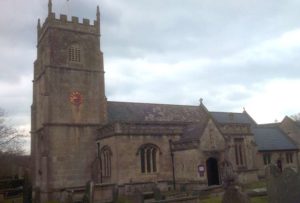 Church of St Nicholas
Church of St Nicholas
Admiral Arthur Phillip, the first governor of New South Wales, is buried in this church, having retired to Bath where he died in 1814. The Australia Chapel, opposite the pulpit, is filled with a display about the man himself, the First Fleet, which he led, and the settlement he founded. It also contains a list of the convicts transported in those first ships, including their names, the places where they were sentenced and their “term” of banishment. (The latter was rather an abstract concept for most, since they were not provided with return tickets!)
Another important local character was Ralph Allen, who was responsible for the rebuilding of the church in the 1750s. Originally from Cornwall, Allen was appointed Postmaster of Bath in 1712 and made a fortune transforming first, the national postal service and, later, the local stone business. His marriage in 1731 brought him Bathampton Manor, a stately pile between the church and the river, which originally belonged to Bath Abbey and is nowadays a home for the elderly. Not content with that, Allen then built Prior Park, south-east of Bath, owned these days by the National Trust.
Allen’s contribution to Bathampton’s stone industry was important. He bought up several small mining companies and modernised the operation to the latest standards. The stones were transported in railway trucks – without engines, but with a controlled use of gravity – from Combe Down to the valley below, where they were “dressed”, before being sent on to Bath, London and elsewhere.
He died in 1764, but the local quarries continued to thrive, under various hands, well into the next century. In 1810, the Kennet and Avon Canal opened, enabling stone to be carried by barge. The village must have been full of bustle in those days, with carts and horses and the heavy work involved in shifting stone. However, the industry eventually declined, for various reasons, and the First World War saw the virtual end of the Combe Down quarries.
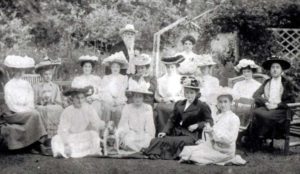 William Harbutt (centre back, with beard)
William Harbutt (centre back, with beard)
This brings us to Plasticine, which might not be a stone mason’s idea of a serious material, but which brought economic regeneration to Bathampton. William Harbutt, its inventor, was an art teacher who moved to the village in 1874. He originally created the stuff for his own students, but then began to produce small packets for local shops. These became so popular that he built a factory, which brought welcome employment to local men and women, and the product was soon selling all over the world. In 1963 the factory burnt down, but it was rebuilt and Plasticine continued to be produced in the village until 1983. The business was then sold and is no longer produced in the area.
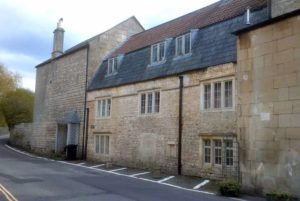 Bathampton Lodge, High Street
Bathampton Lodge, High Street
Bathampton may be quieter now, but intriguing relics of its past add to its attractions. A long façade in High Street, presenting three sets of mullioned windows and, tantalisingly, a single blocked-up door, is a house called Bathampton Lodge, built in the 17th or 18th century. It is another Grade II listed building, like the George Inn and the stone-built, “dog-leg”, road bridge over the canal nearby.
The canal itself is nowadays run by the Canal & River Trust. Several companies offer boat-trips up and down the canal, and as on the river, there is plenty of wildlife to be seen. Narrow-boats moored at the water’s edge suggest the on-going appeal of the place.
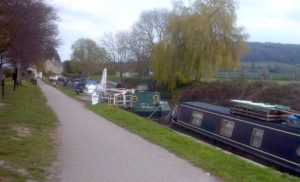
Some narrow-boat dwellers have been canny enough to start businesses that benefit from their situation. Just beyond the bridge by the George is the Raft Café Boat, which sells coffee, tea and snacks to passers-by. It is well-established enough to have its own mooring reservation and plastic chairs for punters.
Plying up and down the Kennet and Avon Canal with their own brand of entertainment are the Water Gypsies, a four-strong string band, who play gypsy jazz music wherever they find themselves moored. Perhaps, on your visit to Bathampton, you may come across them. That would be likely to put the topping on a perfect day.
By Julia Elliot. Julia took a History MA a few years ago. She used to write theatre programme notes, but these days scribbles mostly about the places she explores in her spare time. Uncovering the past is part of the fun; having a good pub lunch is another part! Most photographs © Julia Elliot.
